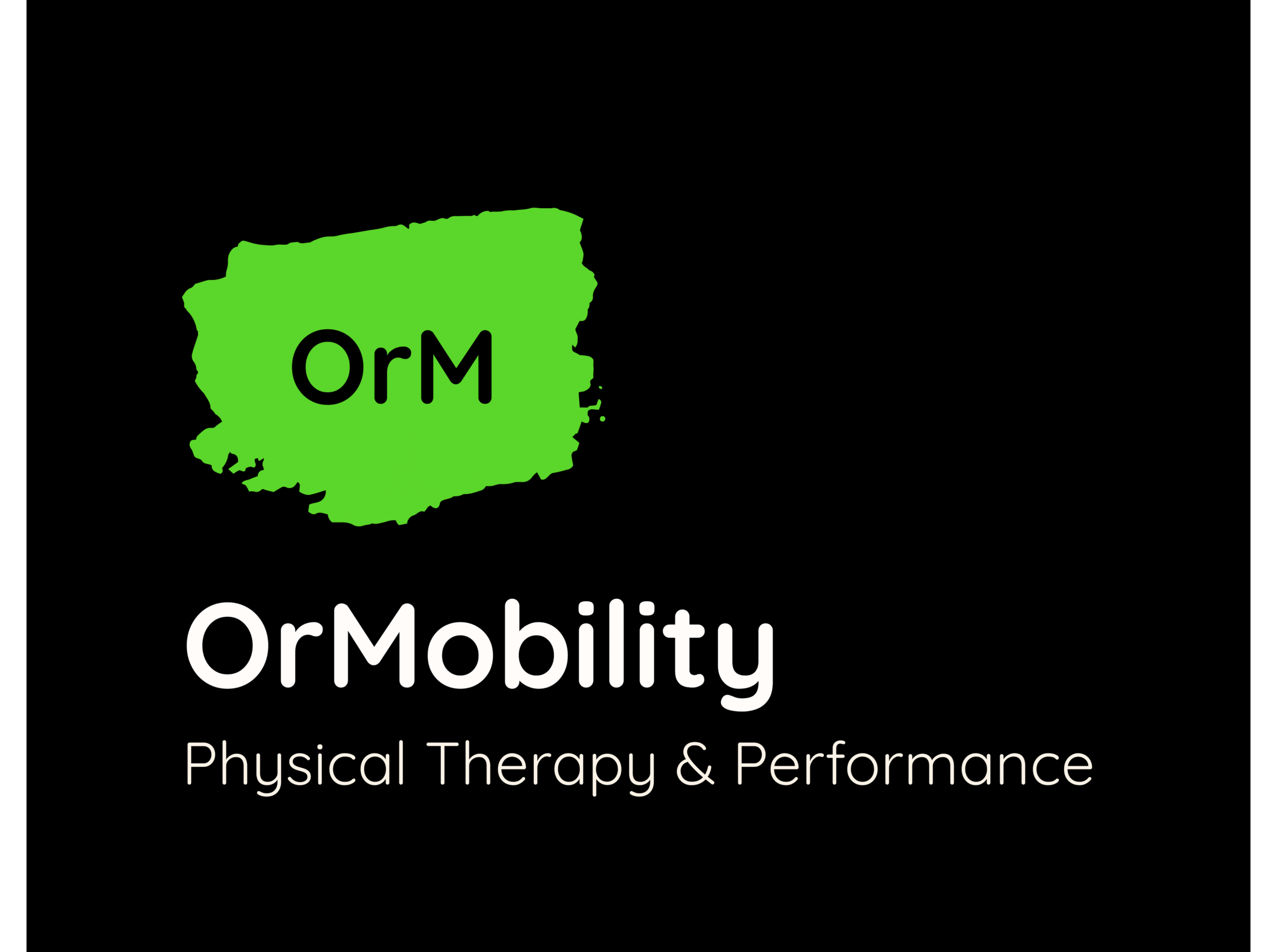A herniated disc in the neck can cause significant discomfort and disrupt daily activities. Understanding how to manage this condition through exercises for herniated discs in the neck and stretches for herniated discs in the neck is crucial for alleviating pain and improving quality of life.
This article explores the causes and symptoms of a herniated disc in the neck, outline effective exercises for relief, and explain how Oregon Mobility Physical Therapy & Performance can help.
Causes of Herniated Disc in Neck
Aging and Degeneration
As we age, the intervertebral discs in our spine lose hydration and elasticity, making them more susceptible to wear and tear. This natural degenerative process can lead to a cervical disc herniation as the outer layer of the disc weakens and allows the inner gel-like core to protrude. Additionally, bad posture and strenuous activities can further contribute to the risk of herniation. Prolonged exposure to these factors can compress the intervertebral foramen, leading to nerve irritation.
Trauma and Injury
Sudden trauma or injury, such as whiplash from a car accident or a fall, can cause a herniated disc. The force exerted on the spine during these events can damage the disc and lead to herniation.
Poor Posture and Overuse
Maintaining poor posture, especially for extended periods, can strain the cervical spine and contribute to disc herniation. Activities that involve repetitive neck movements or heavy lifting can also increase the risk of developing this condition.
Symptoms of Herniated Disc in Neck
A herniated disc in the neck can manifest in various ways. Common symptoms include neck pain, stiffness, and a radiating pain that extends into the shoulder blade, shoulders, arms, and hands. Numbness, tingling, and weakness in these areas, often referred to as arm pain, are also typical signs. In severe cases, compression of the spinal cord can occur, leading to more significant neurological symptoms. In some cases, individuals may experience headaches, dizziness, or even blurred vision.
Exercises for Neck Pain Relief

Incorporating specific therapeutic exercises for herniated discs in the neck into your routine can help alleviate the pain associated with a herniated disc in the neck. Here are some effective exercises:
Neck Extension
- Sit or stand with a straight back.
- Slowly tilt your head backward, looking up at the ceiling.
- Hold the position for a few seconds, then return to the starting position.
- Repeat 10 times.
Chin Tuck (Neck Retraction)
- Sit or stand with your back straight and shoulders relaxed.
- Pull your chin straight back, creating a “double chin” appearance.
- Hold for 5 seconds and relax.
- Repeat 10-15 times.
Lateral Bend
- Sit or stand with your back straight.
- Gently tilt your head to one side, bringing your ear towards your shoulder.
- Hold for 15-30 seconds, then switch sides.
- Repeat 3-5 times on each side.
Scalene Stretch
- Sit or stand with a straight back.
- Place one hand on the opposite side of your head.
- Gently pull your head towards your shoulder until you feel a stretch.
- Hold for 15-30 seconds, then switch sides.
- Repeat 3-5 times on each side.
Neck Rotation
- Sit or stand with your back straight.
- Slowly turn your head to one side, looking over your shoulder.
- Hold for 15-30 seconds, then switch sides.
- Repeat 3-5 times on each side.
Backward Bend
- Stand with your feet shoulder-width apart.
- Place your hands on your lower back for support.
- Gently arch your back, looking up towards the ceiling.
- Hold for a few seconds, then return to the starting position.
- Repeat 10 times.
Prone Press-Up
- Lie face down with your hands under your shoulders.
- Slowly press your upper body off the ground, keeping your hips and lower body relaxed.
- Hold for a few seconds, then lower back down.
- Repeat 10-15 times.
Bird Dog
- Start on your hands and knees, with your hands under your shoulders and knees under your hips.
- Extend one arm forward and the opposite leg backward, keeping your back straight.
- Hold for a few seconds, then return to the starting position.
- Repeat on the other side.
- Do 10-15 repetitions on each side.
How Can Exercises Help Manage Herniated Disc Symptoms?
Strengthening Core Stability
Exercises like the Bird Dog help strengthen the core muscles, providing better support for the spine and reducing the strain on the neck.
Improving Flexibility and Range of Motion
Stretching exercises such as the Scalene Stretch and Neck Rotation enhance flexibility and range of motion, reducing stiffness and pain. This can improve blood flow and promote healing.
Promoting Spinal Alignment
Exercises that focus on posture correction, like Chin Tucks, help maintain proper spinal alignment, which can alleviate pressure on the herniated disc and reduce symptoms.
Can a Herniated Disc in Neck Cause Blurred Vision?
In some cases, a herniated disc in the neck can cause blurred vision. This occurs when the protruding disc compresses nerves or blood vessels, which affects vision. If you experience blurred vision along with neck pain, it’s essential to seek medical attention.
Can a Herniated Disc in Neck Cause Headaches and Dizziness?
Yes, a herniated disc in the neck can cause headaches and dizziness. The compression of nerves or blood vessels in the cervical spine can lead to these symptoms. Addressing the herniated disc through exercises and physical therapy can help alleviate these issues. Understanding the link between symptoms such as headaches and vision problems can help answer the question, can a herniated disc in the neck cause blurred vision?
How OrMobility Physical Therapy & Performance Can Help

Personalized Treatment Plans
At OrMobility Physical Therapy & Performance, we develop personalized treatment plans tailored to each patient’s specific needs and conditions. This individualized approach ensures the most effective management of symptoms and recovery.
Expert Physical Therapy Techniques
Our team of skilled physical therapists employs advanced techniques and exercises designed to relieve pain, improve mobility, and strengthen the affected areas. This might include gentle exercises to start and gradually progressing to more intense activities as tolerated.
Education on Neck Care and Prevention
We educate our patients on proper neck care and preventive measures to avoid future injuries. Understanding the importance of posture, ergonomics, and regular therapeutic exercises can significantly reduce the risk of re-injury.
Collaborative Approach with Patients
We believe in a collaborative approach, working closely with our patients to set achievable goals and track progress. This partnership ensures patients are actively involved in their recovery journey.
Exercises to Avoid with a Herniated Disc
While exercises can be beneficial, some activities may exacerbate symptoms and should be avoided:
- Heavy lifting or straining activities
- High-impact sports or exercises
- Twisting or jerking motions
- Prolonged sitting or standing in bad posture
Conclusion
Managing a herniated disc in the neck requires a combination of effective exercises, proper posture, and professional guidance. Both active and passive treatments had a significantly positive impact on pain and disability at the 6-week follow-up compared to those who did not receive any treatment at all. Any disc in the spine can become herniated, including the neck, but it most commonly occurs in the lower back. Studies have shown that exercise-based physical therapy leads to reduced pain and disability after a lumbar disc herniation and improved pain levels after a herniation in the cervical spine. Avoiding strenuous activities and maintaining proper blood flow are critical aspects of recovery. Understanding the role of different types of exercises in managing disc pain is crucial.
At OrMobility Physical Therapy & Performance, we are dedicated to helping you find relief and regain your quality of life through personalized treatment plans and expert care.
FAQs
What is the fastest way to heal a herniated disc in the neck?
The fastest way to heal a herniated disc involves a combination of rest, physical therapy, and therapeutic exercises designed to alleviate pressure and strengthen the neck muscles. Consulting with a healthcare professional for a tailored treatment plan is crucial.
Can you exercise with a herniated disc in your neck?
Yes, you can exercise with a herniated disc in your neck. Still, it’s important to perform exercises that are specifically recommended for your condition and avoid activities that could worsen your symptoms. A structured exercise program can be beneficial.
What should you not do with a herniated disc in your neck?
Avoid heavy lifting, high-impact activities, and movements that involve twisting or jerking your neck. Additionally, maintaining proper posture and ergonomics is essential to prevent further strain on the affected area. Use pain relievers as needed to manage discomfort. Pay attention to your activity level and avoid activities that increase disc pain.
For more information and personalized treatment options, contact Oregon Mobility Physical Therapy & Performance today.


